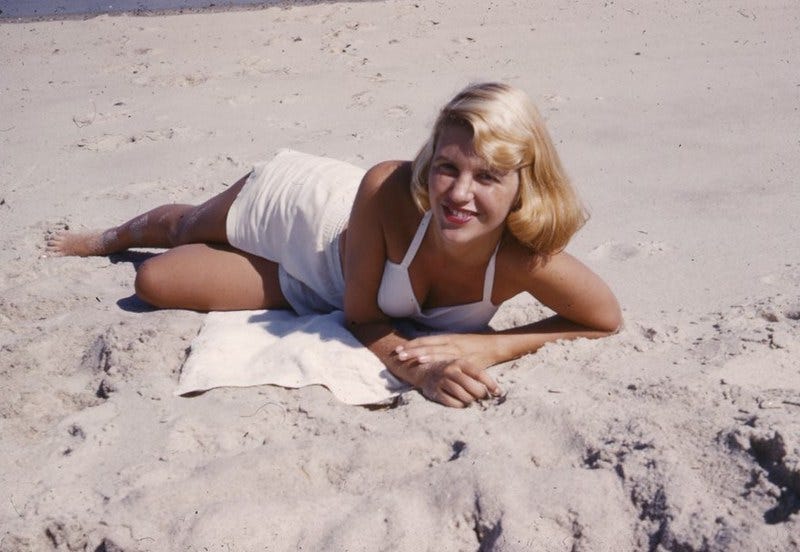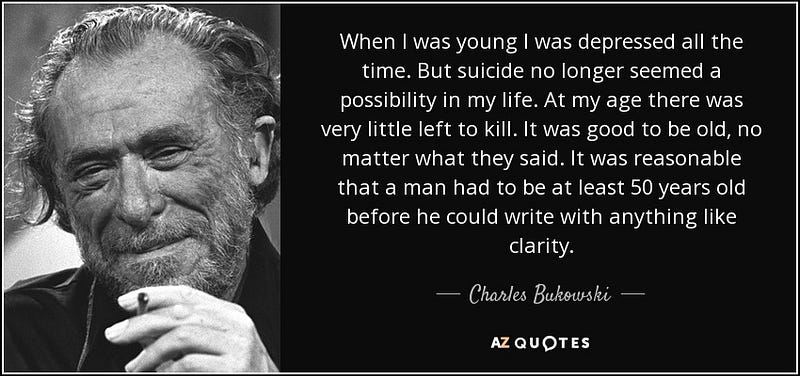Understanding the Connection Between Creativity and Depression
Written on
Chapter 1: The Fascination with Literary Icons
My admiration for renowned authors drives me to explore not just their literary contributions but also their personal narratives. I'm captivated by their lives, seeking to understand their thoughts, struggles, and backgrounds to comprehend the roots of their creative brilliance.
At one point, I found myself deeply absorbed in the life of Sylvia Plath. I spent days cocooned indoors, lost in her poetry and recordings, her haunting voice resonating with me even after her tragic passing. Each word she spoke lingered in my mind like raindrops on flower petals, refusing to fall away. As I delved into Plath's life, I discovered a disturbing trend among many of my favorite writers: a significant number battled depression, and some, like Plath, Virginia Woolf, and Ernest Hemingway, ultimately took their own lives.
This realization fueled my desire to investigate the relationship between creativity and mental health. Why do so many creative individuals suffer from depression, and what drives them to such desperate actions? My frustration stemmed from the fact that these brilliant minds were lost too soon, leaving me yearning to understand their pain and the forces behind it.

Chapter 2: Delving Deeper into Their Lives
I sought answers in the biographies of these writers, examining their mental health diagnoses and family histories. However, I struggled to grasp their essence through mere facts. It was only when I turned to their quotes that I began to understand their perspectives. Virginia Woolf's words struck me profoundly:
“How many times have people used a pen or paintbrush because they couldn’t pull the trigger?”
This quote instilled a newfound respect for her, revealing that in their darkest moments, these creatives didn't place blame on others but instead sought to articulate their suffering through their art. Freud's insights, especially his assertion that artists are successful neurotics, resonated with me as well. He argued that rather than being mad, artists are often unfulfilled, striving to elevate a flawed world through their work.
Freud might have faced challenges in understanding Hemingway, a writer who embodied a stoic masculinity that shunned therapy. Ironically, Hemingway underwent electroconvulsive therapy multiple times, which likely exacerbated his struggles with bipolar disorder, paranoia, and alcoholism. Tragically, he ended his life with a shotgun at age 61, following a family history of mental illness.
Similarly, Plath dealt with the trauma of losing her father at a young age and faced abandonment when her husband had an affair. Diagnosed with depression, she later exhibited signs of Borderline Personality Disorder. Woolf, too, suffered greatly, having been sexually abused in her youth. Ultimately, she drowned herself in a river, leaving a poignant note expressing her feelings of being a burden.

Chapter 3: Insights and Conclusions
To truly grasp the connection between creativity and depression, one must first attempt to connect with the artist's spirit. Through my exploration, I have come to realize that those who grapple with depression often possess heightened sensitivity, which drives their quest for perfection. The inability to fulfill their vision of a better world can lead to despair and, in some cases, suicide.
“That terrible mood of depression of whether it’s any good or not is what is known as the Artist’s Reward.”
— Ernest Hemingway.
By examining the lives of my favorite authors, I learned to appreciate their unique qualities rather than define them solely by their tragic endings. They are not mere embodiments of the tortured artist stereotype; instead, they are perfectionists whose struggles manifest sporadically, much like their creativity.
I believe these writers were placed on this earth to impart moral lessons through their works, leaving behind a legacy of profound truths. Their experiences of hardship enable them to convey messages that resonate deeply with us.
What Can We Learn from Depressed Writers?
Artists who struggle with depression often reveal uncomfortable truths without fear of judgment. If you are experiencing depression, recognize that it signifies depth of feeling, rather than indifference. Let this emotional struggle guide you to create impactful change—not just in your life but also in the lives of others.
By embracing the legacy left by these artists, we can foster a greater understanding of our shared humanity, transcending boundaries of race and background. Stand where the authentic creatives left off, allowing their influence to inspire a wave of positive change.
You should aspire to be an open case, one that invites inquiry and contemplation. Embrace the complexities of your existence and create art that leaves others pondering long after your work is done. Let your struggle illuminate your creativity; if more individuals recognize that their depression can be a calling rather than a curse, they may find a path to clarity.
Despite my yearning for more from these artists, I have come to accept their limits. I can no longer dwell on my anger; instead, I choose to cherish the treasures they bequeathed us.
To conclude, I'll share two poignant quotes from Charles Bukowski, another literary figure who lived life on his own terms:

“Some people never go crazy. What truly horrible lives they must lead.”
— Charles Bukowski.
In the video titled "How to Deal with Depression as an Artist," explore practical strategies for artists to navigate their emotional challenges while maintaining their creative spirit.
The second video, "Why Artists Get Depressed When They Don't Work," delves into the psychological impact of creative stagnation and offers insights into overcoming such struggles.